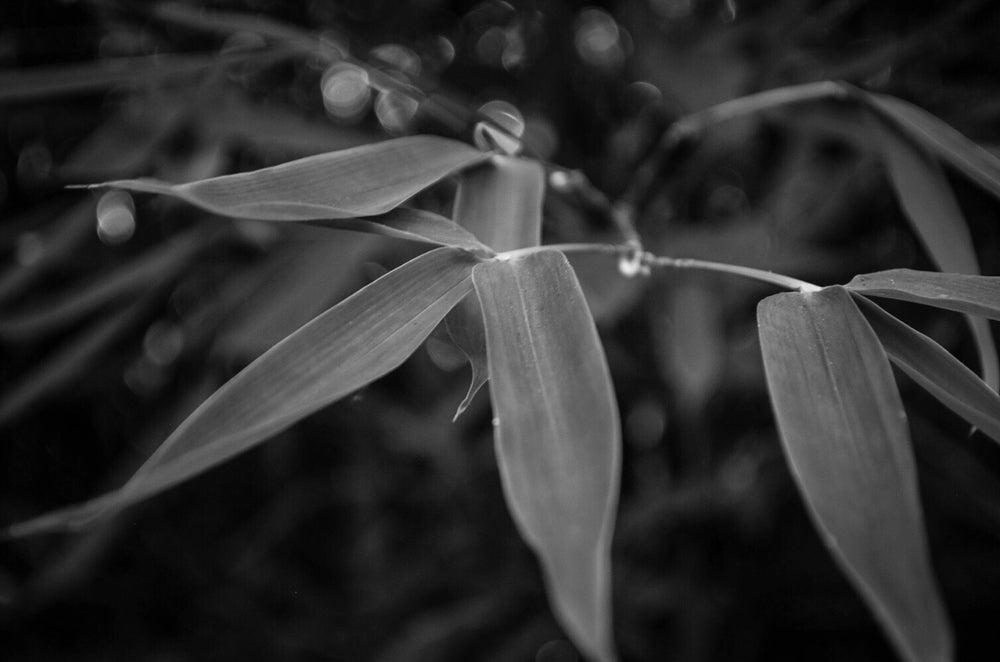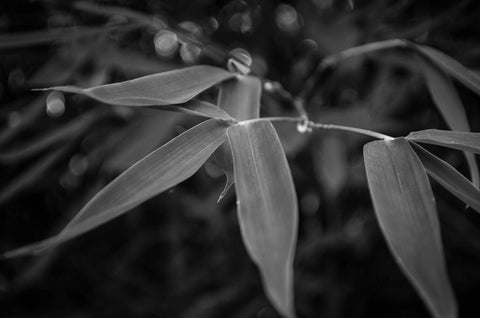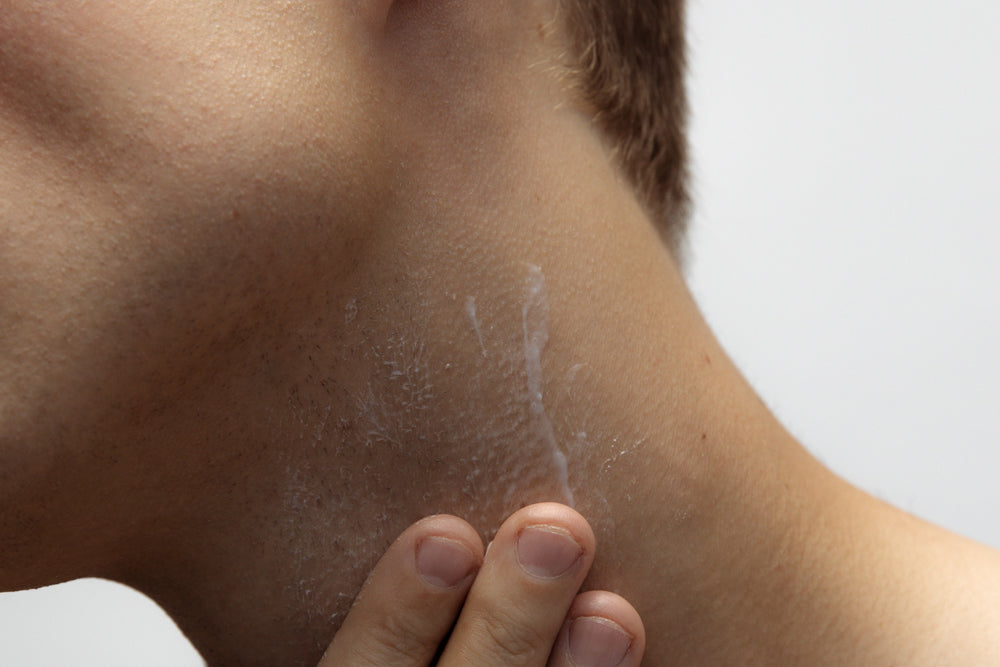
ingredient focus: bamboo

the bottom line
A symbol of longevity, strength, and flexibility, the bamboo plant is a valuable ally in the world of beauty. Found in diverse climates, bamboo is one of the fastest-growing plants in the world and is capable of producing 35% more oxygen than trees. Almost every part of the plant can be used, making it one of the most sustainable beauty ingredients. Read on for more about this green beauty.
first layer: the history of bamboo
The word “bamboo” comes from the Kannada term bambu. Bamboo is believed in some Asian cultures to have been the source of humanity which emerged from its stem. The plant’s long life is responsible for the Chinese using it as a symbol of uprightness, while in Indian culture it is a symbol of friendship.
The bamboo plant itself represents more than 1400 swift-growing evergreen plants from the subfamily Bambusoidea. These include Bambuseae (tropical woody bamboo), Olyreae (herbaceous bamboo), Arundinarieae (temperate woody bamboo), Pooideae, and Oryzoideae. While bamboo plants are most commonly found in the tropical and subtropical regions of East and Southeast Asia, they can also be found in cooler mountainous regions and cloud forests. Small numbers of bamboo plants have been identified in sub-Saharan Africa, South America, Central America, and Mexico.
Because bamboo grows rapidly without stringent water requirements, it is considered to be a renewable material with the ability to adapt to varying climates. It’s also capable of absorbing carbon dioxide while releasing oxygen. As such, it’s considered to be an effective mitigator of climate change.
second layer: the science of bamboo
Extracts from different parts of the bamboo plant have been shown to have different chemical compositions with correspondingly different activity. Every part of the bamboo plant, including the leaves, branches, stems, shoots, rhizomes, roots, and tabashir (bamboo stem liquid), has been used for beauty benefits.
While the specific actives in each part of the bamboo plant vary according to the species, bamboo leaves have been shown to contain polyphenols *including flavonoids*, lactones*, and phenolic acids* which act as antioxidants. Bamboo shoots are rich in vitamins including vitamins A, B (1,3, and 6), C, and E; minerals; polyphenols*; and amino acids including arginine and tyrosine.
Bamboo stem liquid, or tabashir, is primarily composed of water and silica. When dried and concentrated, it produces bamboo stem powder which contains a minimum of 70% silica. Silica is used as both an absorbent and exfoliant.
third layer: skin benefits of bamboo
As noted previously, every part of the bamboo plant has been used in beauty, with each possessing different properties useful in skincare. Among these are the following:
antioxidant: many parts of the bamboo plant have been shown to possess antioxidative properties, including the leaves, inner stem, and branches.
exfoliant: bamboo stem powder can be found in various particle sizes, rendering it useful for different applications. Powder with particles of 500 microns or higher is typically used in body scrubs, while stem powder with smaller particles of 100-250 microns is used for facial exfoliation.
emollient: bamboo glycerites and bamboo oil are used to soothe and condition the skin.
astringent: bamboo hydrosol, or bamboo water, can be used as an astringent for the skin.
absorbent: when bamboo stem particles are below 50 microns, they can be used as absorbents which decrease sebum in oily skin. Bamboo is a superior ingredient for skin prone to oiliness and acne.
anti-bacterial: anti-bacterial properties have been found in extracts from bamboo leaves and the outer stem.
anti-melanogenic: extracts from the peel, outer stem and rhizome have been shown to inhibit melanin* biosynthesis by suppressing the activity of tyrosinase*, one of the key steps in the formation of skin pigmentation.
moisturizing: tricin, one of the components of bamboo, has demonstrated skin moisture retention and increased production of hyaluronic acid.
anti-wrinkle: tricin has also been shown to increase the production of collagen.
hair growth: the silica in bamboo is believed to promote hair growth, strength, and elasticity.
fourth layer: how we do it
Bamboo is a key ingredient in several of our formulations. Our rice & hinoki facial cleanser uses bamboo water to hydrate and deliver critical antioxidants to the skin. Dropping in 2024, our bamboo & yuzu facial scrub, with bamboo stem extract to gently exfoliate the skin for a brighter and smoother appearance.
All this and more at www.anokhaskincare.com .
xx
anokha
references:
- https://www.pantene.in/en-in/hair-fall-problems-and-hair-care-solutions/benefits-of-bamboo-extract-for-hair/
- https://www.formulabotanica.com
- Choi MH, Jo HG, Yang JH, Ki SH, S HJ. Antioxidative and anti-melanogenic activities of bamboo stems (Phyllostachys nigra variety henosis) via PKA/CREB-mediated MITF downregulation in B16F10 melanoma cells. Int J Mol Sci 2018; 19: 409-427.
- Biological activities and phytochemical profiles of extracts from different parts of bamboo (Phyllostachys pubescens). Molecules 2014; 19: 8238-8260.
- Ashour A, Elbermawi A, Amen Y, et al. Melanin synthesis inhibition activity of compounds isolated from bamboo shoot skin (Phyllostachys pubescens). Molecules 2023; 28: 23-35.
- https://en.wikipedia.org/wiki/Bamboo
definitions:
absorbent: a substance or item that soaks up liquid easily
antioxidant: an antioxidant is a compound that inhibits oxidation. free radicals create oxidative stress and an inflammatory response which in turn can damage DNA and result in injury to the epidermal and dermal layers of the skin. in the skin, this manifests as premature aging with decreased elasticity leading to increased wrinkling, age spots, and decreased skin tone. antioxidants stabilize free radicals, which in turn limits their ability to damage the body. some of our favorite ingredients are notable for their antioxidant effects, including elderberry, plum, and lychee.
astringent: derived from the Latin word adstringere ("to bind tight"), an astringent is a substance that tightens the skin. in skincare, we use them to cleanse, help reduce the appearance of pores, and even reduce inflammation and acne. some commonly used astringents include alcohol and witch hazel, but these aren't our favorites because of their drying effects. we favor gentle botanical ingredients such as rosewater that can boost hydration while soothing and calming the skin. find this beauty in our lotus flower & rosewater toner.
emollient: a substance that softens or soothes the skin
exfoliant: an object or ingredient that removes dead skin cells. mechanical exfoliation uses a tool such as a scrub or sponge to physically remove cells, while chemical exfoliation uses chemicals, such as alpha and beta hydroxy acids, to dissolve skin cells.
flavonoids: flavonoids are found within the family of polyphenols and are noted for their significant antioxidant properties.
lactones: lactones are exponents of secondary metabolites with significant biological activities. they are produced by plants, bacteria, fungi, marine sponges, and other organisms.
melanin: melanin is a dark brown to black pigment occurring in the hair, skin, and iris of the eye. it's responsible for tanning of skin.
melanogenic: capable of inducing pigmentation
phenolic acids: phenolic acids are a key class of polyphenols which are natural antioxidants. they include cinnamic and benzoic acid derivatives.
polyphenols: a large family of naturally-occurring phenols which are abundant in plants. they include flavonoids and phenolic acids (including coumaric acid, caffeic acid, and ferulic acid). they are known for their antioxidant properties.
silica: silicon dioxide, or silica, is an oxide of silicon. it is most commonly found in nature as quartz.
tyrosinase: tyrosinase is an enzyme which is the rate-limiting step for controlling the production of melanin.
faq’s:
what is bamboo?
the bamboo plant represents more than 1400 swift-growing evergreen plants from the subfamily Bambusoidea. they are most commonly found in the tropical and subtropical regions of East and Southeast Asia.
what is tabashir?
tabashir is a translucent liquid found in the nodal joints of bamboo plants. tabashir is rich in silica and when dried and concentrated produces bamboo stem powder.
what are some bamboo extract benefits?
extracts of bamboo have been shown to have antioxidant, exfoliant, emollient, anti-bacterial, and anti-melanogenic effects.
can you use bamboo extract for hair?
the silica in bamboo is believed to promote hair growth, strength, and elasticity.
what are some bamboo stem extract benefits?
bamboo stem liquid is composed of water and silica. when dried and concentrated, it produces bamboo stem powder which contains silica, which is both an absorbent and exfoliant.



Hinterlasse einen Kommentar
Diese Website ist durch hCaptcha geschützt und es gelten die allgemeinen Geschäftsbedingungen und Datenschutzbestimmungen von hCaptcha.